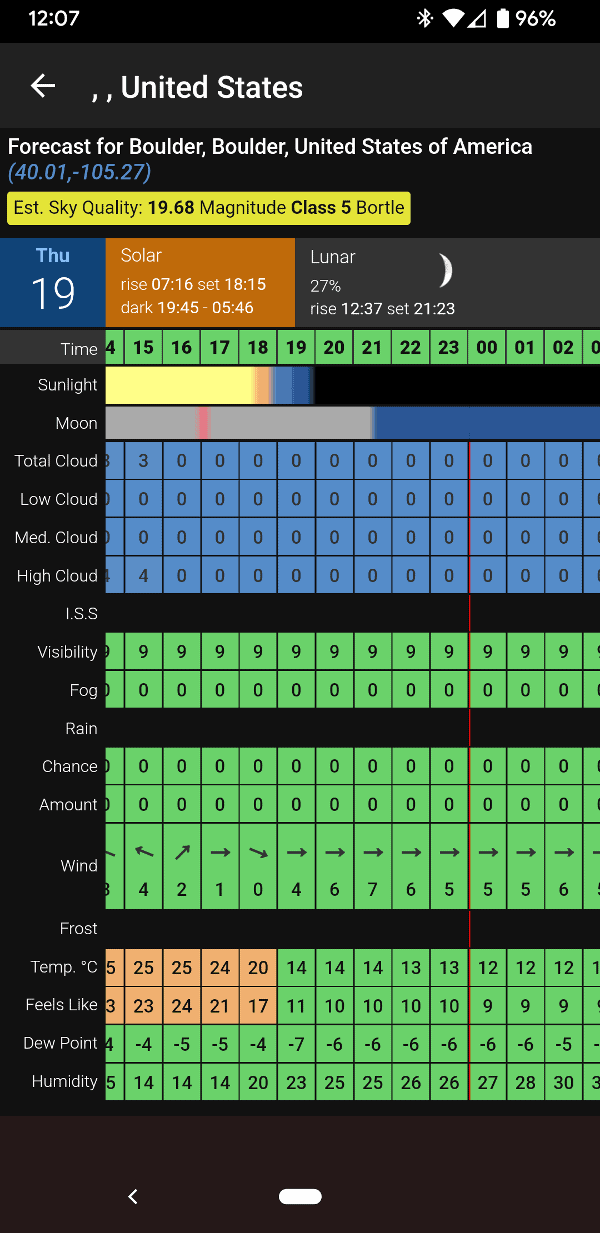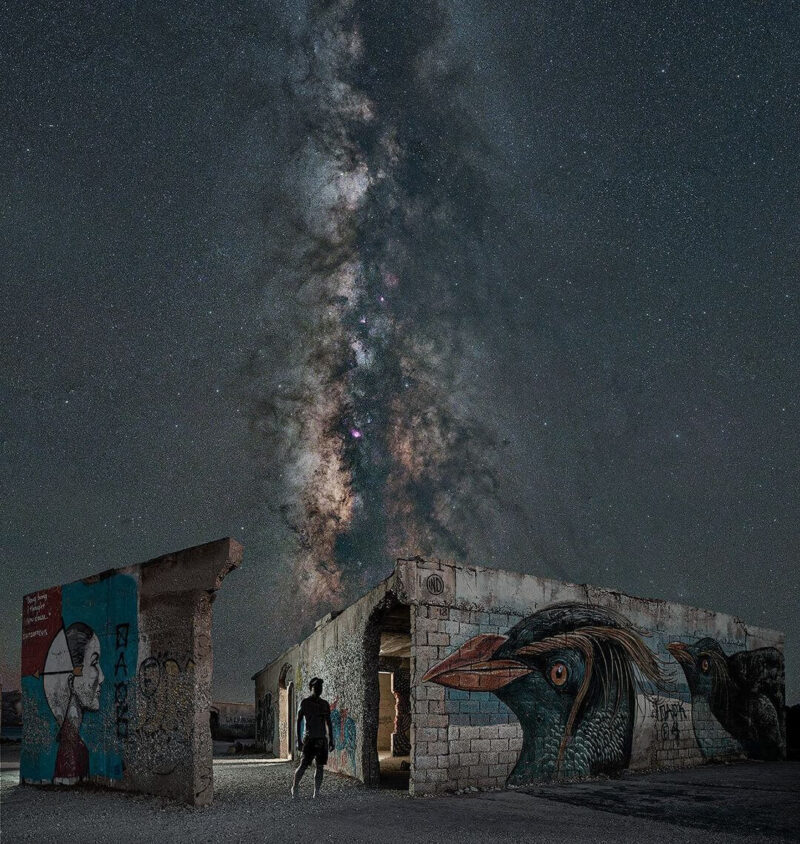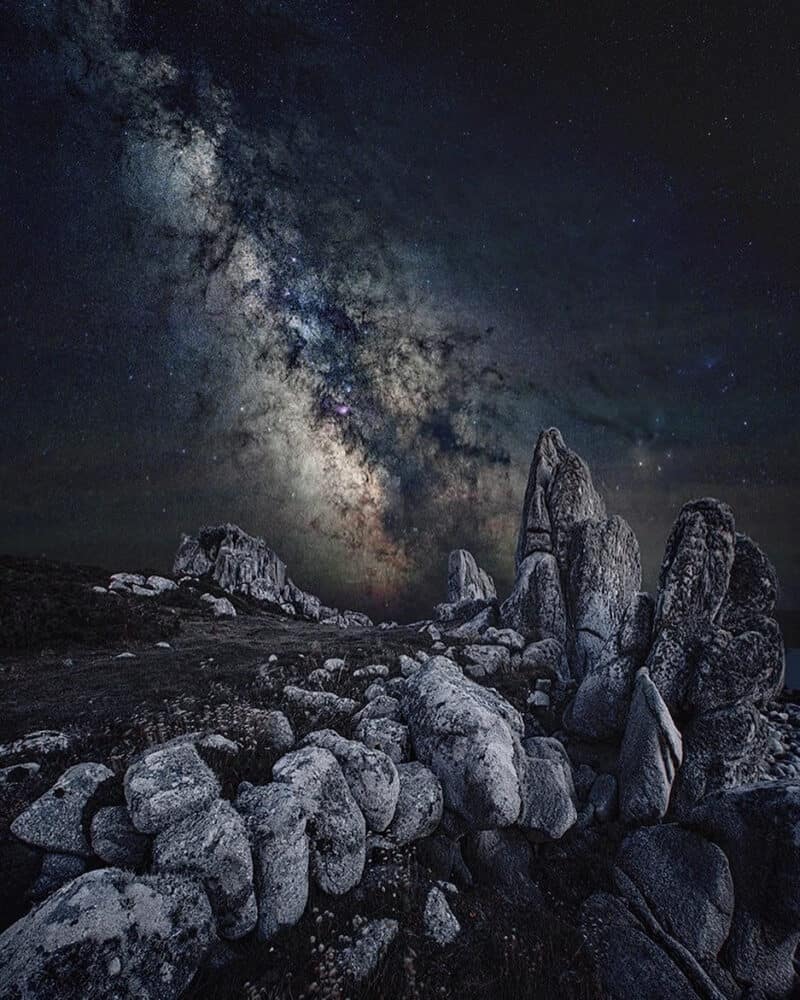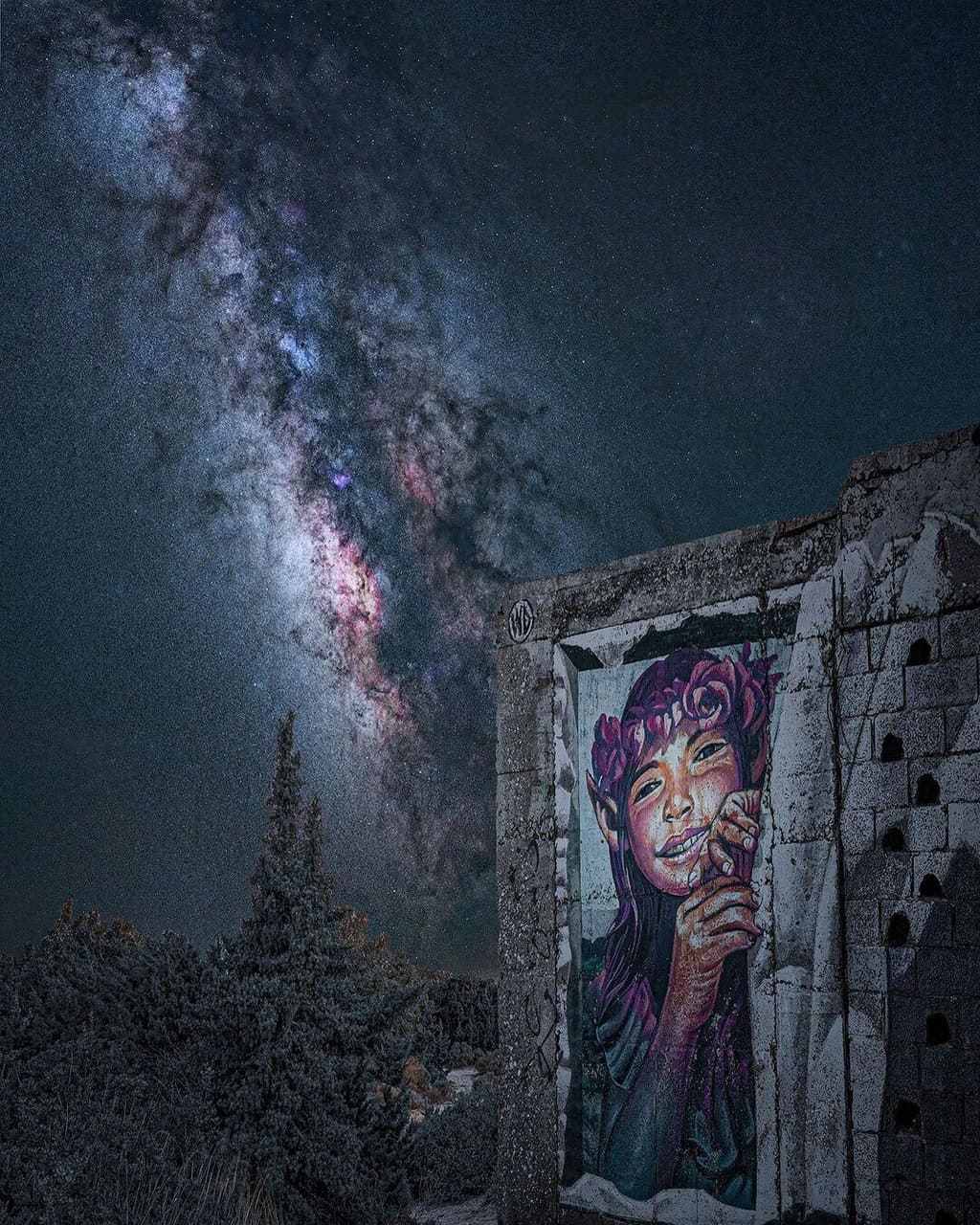In our latest interview with photographers shortlisted for Astronomy Photographer of the Year, we have Derek Horlock.
He has three images shortlisted for the competition in 2023 – Pandora’s Box (above), St Agnes and Abandoned Beach Hotel (below) – which he details how he captured below.
How Did You Plan the Shots?
I spend a lot of time using Google Maps to look for landscape features or man-made structures that I could possibly use as a foreground.
I also consult a light pollution app, Dark Sky Finder. It gives me an idea of where the least polluted skies are anywhere in the world.
However, it’s important to understand that the maps are only accurate for what is above you at a particular location.
If, for example, you are shooting the Milky Way which is in the southern sky you need to look out for any towns etc that might be in that direction.
If the locations are in the UK I try to visit in advance.
I know the coast of Devon and Cornwall, the Scilly Isles and Pembrokeshire with their southerly aspect into the Atlantic are the best places to see the Milky Way, so I concentrate on these areas.
I allocate time around the new moon and keep an eye out for the weather using the Clear Outside app from First Light Optics.

I only travel to a place if the weather is favourable, often deciding on the day. I do not book accommodation in advance. If I have to, I take a tent and camp out.
If I am travelling abroad, locations must meet certain criteria:
- Is it a relatively light pollution free location?
- Is it the week of a New Moon?
- Is it between March and October? (Milky Way season)
- Where will the Milky Way be situated in the sky?
- What will the weather be like? Is it the dry or rainy season?
- Are there any distinctive features such as rocks on the coast or abandoned buildings I can make use of as a foreground?
With regards to the position of the Milky Way in the sky, if it’s early in the season, the Milky Way is often more horizontal before it rises overnight.
This is ideal if you are trying to capture a large panorama across a flat landscape such as the desert.
By the end of the season, the Milky Way is almost upright just after dark.

What Equipment Did You Use?
I use:
- Camera: Nikon Z6 II (astro-modified)
- Lenses: Three prime 24mm, 35mm, and 50mm Nikon Z mount lenses and a Samyang 14mm
- Star Trackers: iOptron SkyGuider Pro and Syrp Genie rotating mount for panoramas
- Tripod: Leofoto LS284CEX carbon fiber tripod – it is small and lightweight but very strong. I hang a bag from it with stones to help stop it from moving.
- Head: Acratech 4725 head – ideal for putting my sky tracker on.
The bulk of my pictures are taken with the 35mm lens and the Syrp Genie with 6+ images to make a panoramic image.
I have also recently started using a Hydrogen Alpha filter.
I brought it primarily to try taking images of Orion’s Loop with landscapes so I can extend my hobby into the winter months when Orion is visible but the Milky Way core is not.
How Did You Compose the Shot?
I use an app called PhotoPills that can demonstrate the exact position of the Milky Way at any time or place in the in the world.
If I am already in the location PhotoPills has a feature that can show a picture of the Milky Way through my phone camera using augmented reality.

What Post-Processing Did You Do?
I use:
Can You Recommend Any Learning Resources For Other Astrophotographers?
I am very much self-taught I have learned from trial and error but I am also indebted to contributors on YouTube for sharing their techniques on post-production.
Related Content from Skies & Scopes
- Astronomy Photographer of the Year: Gear Analysis
- Best Astrophotographers Interviews & Case Studies
- Best Cameras for Astrophotography
- Best Mirrorless Cameras for Astrophotography
- What is an Astro Modified Camera?
- Best Lenses for Astrophotography
- Best Star Tracker for Astrophotography
- Best Astrophotography Apps




